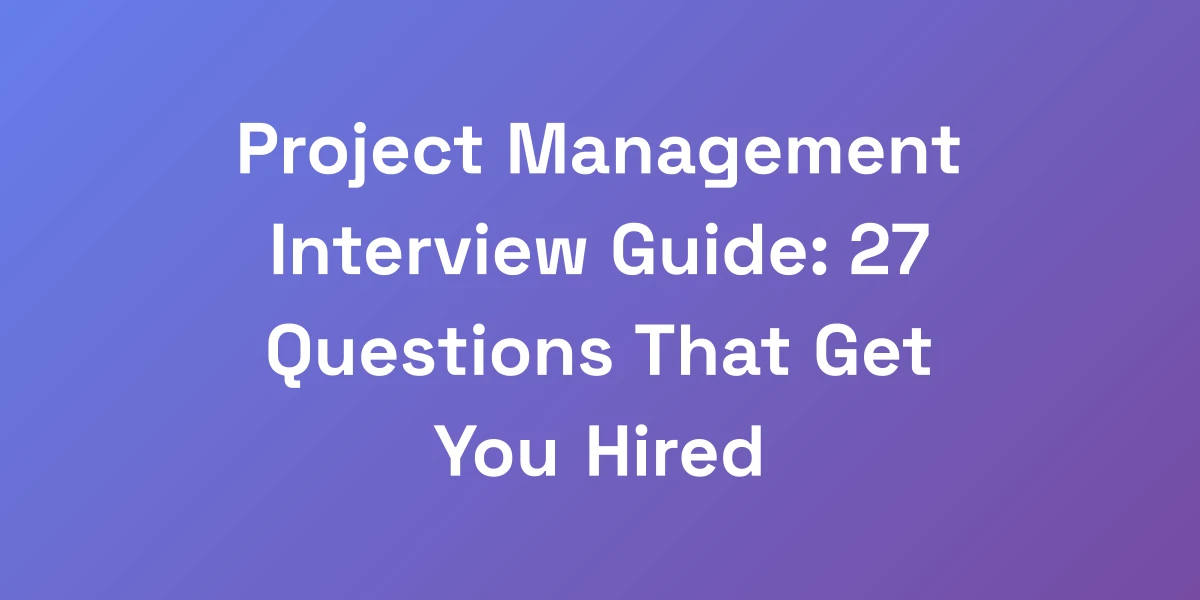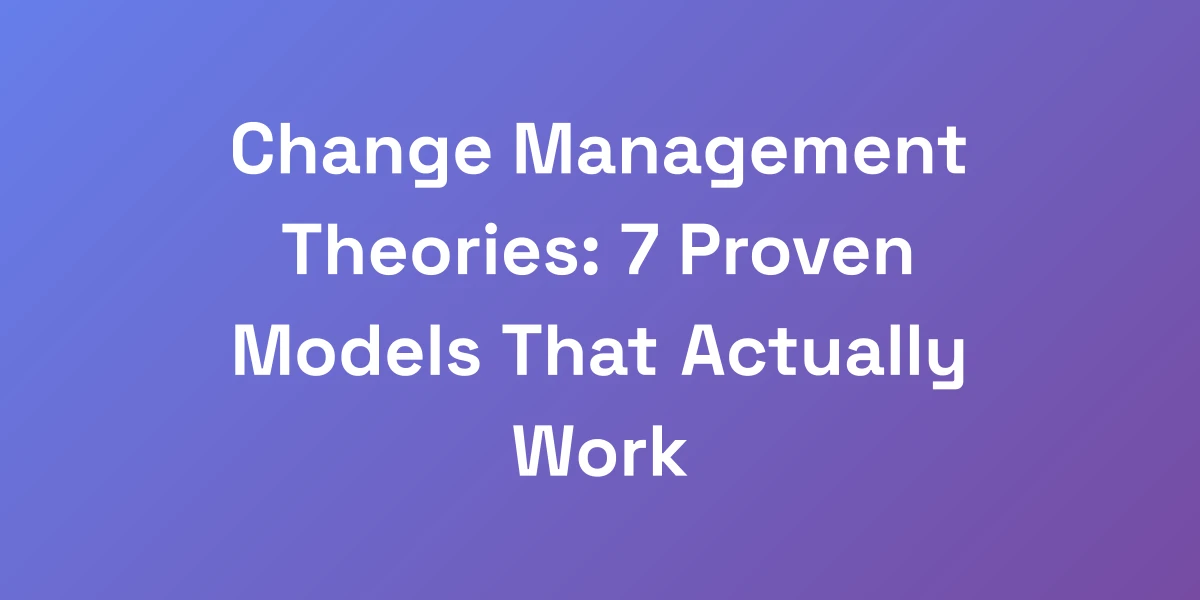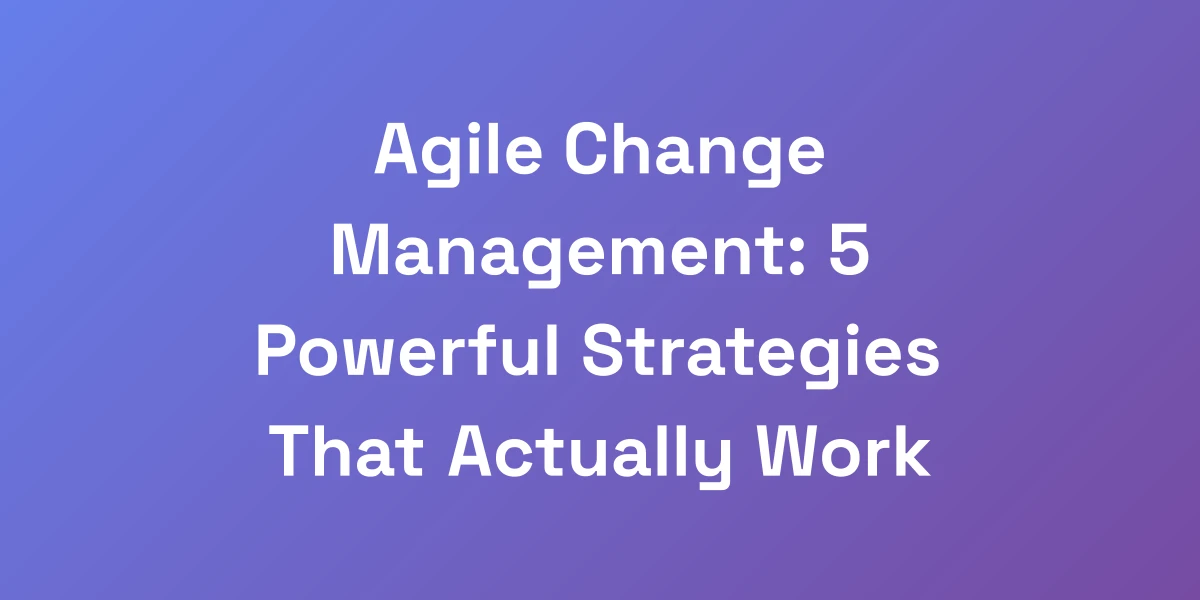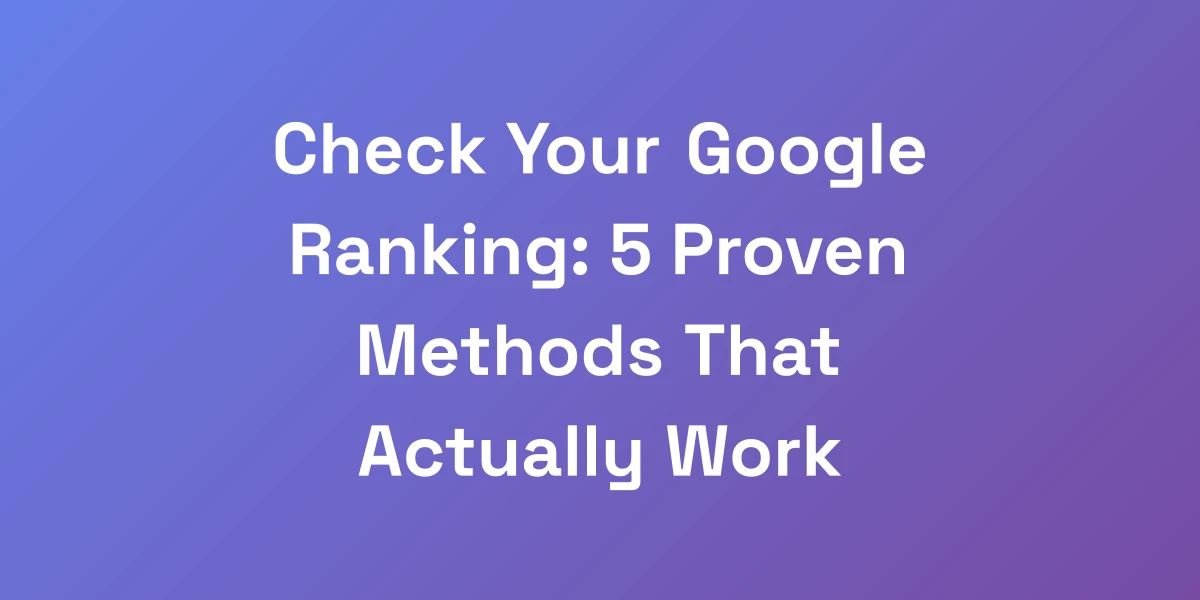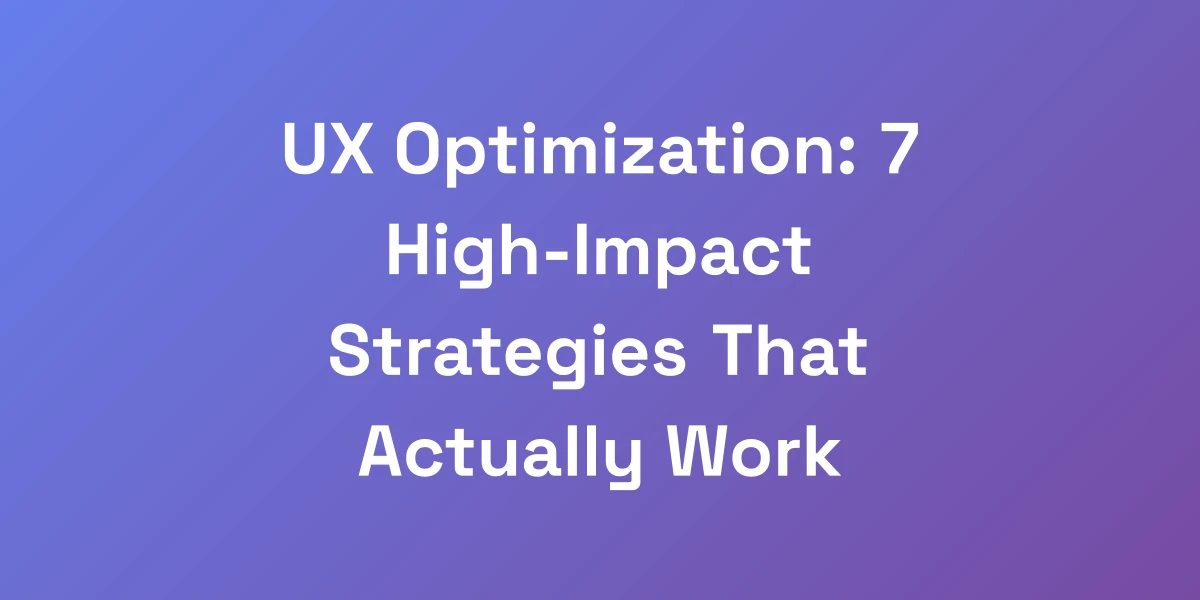
Nail Your Product Management Interview: 167 Questions That Actually Get Offers
Mar 17, 2025 | By [email protected]
The New Rules of Product Management Interviews in 2025
Let me cut through the BS right now – product management interviews have changed dramatically. The old playbook of memorizing case studies and theoretical frameworks? Dead.
What actually moves the needle is your ability to demonstrate real product thinking and decision-making capabilities.
We’ve seen how the landscape has shifted, especially with the influx of top-tier tech companies like Google raising their standards.
I’ve spent countless hours interviewing PM candidates, and I’m going to show you exactly what separates the candidates who get multiple offers from those who keep striking out.
This isn’t your typical interview guide – this is the raw, unfiltered truth about what actually matters.
Why Traditional PM Interview Prep Is Failing Candidates
Traditional preparation methods focus heavily on rote memorization of case studies and generic frameworks.
But when you walk into a real interview, what do you need? It’s not about how many frameworks you’ve memorized; it’s about how you apply them in real-world situations.
- Lack of Practical Application: Candidates often fail to demonstrate how their theoretical knowledge translates into actionable insights.
- Overemphasis on Structure: While structure is important, over-relying on it can make your answers seem rehearsed and lacking spontaneity.
- Ignoring Real Product Challenges: Real interviews test your ability to handle actual product challenges, not just hypothetical scenarios.
We need a shift from theoretical to practical, focusing on how you think and act as a product manager, rather than what you know.
The Three Core Components Modern Companies Actually Test For
Modern companies aren’t just looking for knowledge; they’re hunting for specific attributes that define great product managers.
Here are the three core components they’re testing for:
- Product Sense: Your innate ability to understand user needs and translate them into valuable products.
- Execution Capability: How effectively you can turn ideas into reality, managing resources and timelines.
- Leadership and Teamwork: Your ability to lead cross-functional teams, resolve conflicts, and drive consensus.
Mastering these three areas is non-negotiable if you want to excel in your next product management interview.
How to Position Yourself as a High-Value PM Candidate
Positioning yourself as a high-value candidate means showcasing not just your skills, but also your mindset and approach to product management.
- Showcase Real Achievements: Highlight specific projects where you made a significant impact.
- Demonstrate Strategic Thinking: Explain how you align product strategies with business goals.
- Emphasize Adaptability: Share examples of how you adapted to changing circumstances or overcame unexpected challenges.
We’re not just looking for competent PMs; we’re seeking strategic thinkers who can drive product success from ideation to launch and beyond.
The New Interview Structure at FAANG vs. Startups
FAANG companies and startups may share the same title of product manager, but their interview structures are worlds apart.
- FAANG: Expect a rigorous, multi-stage process with a heavy emphasis on technical and strategic questions. Interviews are structured around solving complex problems and demonstrating deep product understanding. For example, Google’s Product Manager Interview and Facebook’s Product Manager Interview.
- Startups: The focus is on agility and cultural fit. The interview process is often more fluid, assessing your ability to wear multiple hats and handle diverse challenges.
Understanding these differences helps you tailor your preparation, ensuring you meet the specific expectations of each type of company.
Setting Up Your 60-Day Interview Preparation Timeline
Preparation is key, and setting up a structured 60-day timeline can make all the difference.
- Weeks 1-2: Self-Assessment and Goal Setting
Determine your strengths and areas for improvement. Set clear goals for what you want to achieve in your preparation. - Weeks 3-4: Deep Dive into Product Management Fundamentals
Reinforce your understanding of core PM concepts, product lifecycle, and key metrics. - Weeks 5-6: Behavioral and Technical Question Practice
Focus on mastering the STAR-V framework for behavioral questions and honing your problem-solving skills for technical questions. - Weeks 7-8: Mock interviews and Feedback
Engage in mock interviews with peers or mentors. Seek constructive feedback and refine your approach.
Sticking to this timeline ensures comprehensive coverage of all critical areas, setting you up for success.
Behavioral Questions That Reveal Your Product Leadership DNA
Here’s the truth about behavioral questions – they’re not actually about your past experiences.
They’re about how you think and make decisions under pressure.
The candidates who nail these questions understand one crucial thing: it’s not the story you tell, but how you frame your decision-making process.
We’re going to dive into my proven STAR-V framework that has helped dozens of candidates turn behavioral questions from their weakness into their secret weapon.
The STAR-V Framework: Adding Value Proposition to Your Stories
The STAR-V framework stands for Situation, Task, Action, Result, and Value.
It helps you structure your responses in a way that highlights not just what you did, but the value it brought.
- Situation: Set the context for your story.
- Task: Explain the challenge or responsibility you faced.
- Action: Describe the specific actions you took to address the task.
- Result: Share the outcomes of your actions.
- Value: Highlight the value or impact of the results.
By following this structure, you ensure your answers are comprehensive and impactful.
Leadership and Conflict Resolution Scenarios
Leadership questions assess your ability to guide teams and resolve conflicts effectively.
For example, you might be asked, “Tell me about a time you had a disagreement with a coworker. How did you resolve it?”
Using the STAR-V framework, describe how you approached the conflict, mediated the situation, and achieved a positive outcome that benefited the team.
Actionable Tip: Always emphasize collaboration and the steps you took to understand and address differing viewpoints.
Cross-Functional Collaboration Examples
Product managers often work with diverse teams.
Questions like, “Tell me about a time you worked with cross-functional teams,” aim to evaluate your teamwork and communication skills.
Share specific instances where you coordinated with engineering, marketing, or sales teams to achieve a common goal. Highlight any challenges and how you overcame them.
Actionable Tip: Showcase your ability to bridge gaps between departments and ensure smooth project execution, potentially utilizing digital marketing for agencies strategies.
Product Vision and Strategy Questions
These questions delve into your ability to craft and communicate a product vision.
For instance, “Describe a scenario where you had to pivot your product strategy. What was the outcome?”
Explain the reasoning behind the pivot, the strategic decisions made, and the positive impact on the product’s success.
Actionable Tip: Demonstrate your strategic thinking and how you align product goals with business objectives.
Handling Failure and Learning Experiences
Failure is a part of the growth process.
Questions like, “Tell me about a time you failed. What did you learn?” assess your resilience and willingness to learn.
Share a genuine experience, focusing on the lessons learned and how you applied them to future projects.
Actionable Tip: Frame failures as learning opportunities that have strengthened your product management skills.
Stakeholder Management Scenarios
Effective stakeholder management is crucial for product managers.
You might be asked, “How do you handle conflicting priorities among stakeholders?”
Explain your approach to understanding each stakeholder’s needs, negotiating priorities, and reaching a consensus that aligns with the product vision.
Actionable Tip: Highlight your communication and negotiation skills, and your ability to maintain positive relationships.
Technical and Product Design Questions That Actually Matter
Stop wasting time on theoretical frameworks that no one uses in real life.
The technical portion of PM interviews is about demonstrating practical product thinking.
I’ve conducted over 500 PM interviews, and I can tell you that what matters isn’t your knowledge of fancy frameworks – it’s your ability to think clearly under pressure and make data-driven decisions. Here’s what actually works in the real world.
Product Metrics and Analytics Deep Dive
Understanding and leveraging product metrics is essential.
You might be asked, “What metrics would you track for a new feature launch?”
Discuss key performance indicators (KPIs) relevant to the feature, such as user adoption rates, engagement metrics, or revenue impact. Explain how these metrics inform your product decisions, potentially utilizing SEO tools for agencies to gather and analyze data effectively.
Actionable Tip: Familiarize yourself with common PM metrics and be prepared to discuss how you’ve used them in past roles.
Feature Prioritization Frameworks That Work
Prioritizing features effectively is a vital skill.
Questions like, “How do you prioritize features for a product roadmap?” test your ability to balance various factors.
Explain your approach using practical frameworks like RICE (Reach, Impact, Confidence, Effort) or MoSCoW (Must-have, Should-have, Could-have, Won’t-have), and provide examples of how you’ve applied them to make informed decisions.
Actionable Tip: Choose a prioritization framework you are comfortable with and have used successfully in previous projects.
System Design for PMs: What You Actually Need to Know
System design questions assess your ability to think holistically about product architecture.
You might be asked, “Design a scalable system for a social media platform.”
Focus on user needs, scalability, reliability, and integration with existing systems. Discuss trade-offs and justify your design decisions based on product goals.
Actionable Tip: While PMs aren’t expected to code, understanding basic system design principles helps in collaborating with engineering teams.
Data-Driven Decision Making Examples
Being data-driven is non-negotiable in product management.
Questions like, “Tell me about a time you used data to drive a product decision,” evaluate your analytical skills.
Provide a specific example where you collected and analyzed data to make a product decision, detailing the process and the positive outcomes that followed, possibly through SEO automation tools.
Actionable Tip: Highlight your ability to gather relevant data, interpret it accurately, and apply insights to drive product success.
A/B Testing and Experimentation Questions
A/B testing is a common method for optimizing product features.
You might be asked, “How would you design an A/B test for a new feature?”
Explain the steps involved: defining the hypothesis, selecting metrics, determining sample size, implementing the test, and analyzing results. Share any past experiences with A/B testing to illustrate your proficiency.
Actionable Tip: Show that you understand the importance of hypothesis-driven experiments and can critically evaluate test results.
Product Strategy and Roadmap Scenarios
Strategic thinking is key to effective product management.
You could be asked, “How would you develop a product roadmap for the next year?”
Detail your process, starting with understanding business goals, conducting market research, prioritizing features based on impact and feasibility, and ensuring alignment with stakeholders, potentially leveraging digital marketing for small businesses principles.
Actionable Tip: Demonstrate your ability to balance short-term wins with long-term strategic goals in your roadmap planning.
Strategic and Business Case Questions That Impress Interviewers
Let’s get real about strategic questions – they’re not testing your business school knowledge.
They’re testing your ability to think like an owner.
Most candidates make the mistake of trying to sound smart instead of being clear and decisive.
We’re going to show you how to approach these questions like a seasoned PM who’s actually shipped products and grown businesses, not like someone who just memorized frameworks.
Market Sizing and Go-to-Market Strategy
Market sizing questions evaluate your ability to assess the potential of a product in the market.
For example, “Estimate the market size for a new fitness app in the U.S.”
Break down the problem into manageable parts, make reasonable assumptions, and walk through your calculations clearly. For go-to-market strategy, outline your approach to launching the product, targeting the right audience, and achieving product adoption.
Actionable Tip: Practice breaking down complex problems into smaller, logical steps to provide clear and structured answers.
Competitive Analysis Frameworks
Understanding competition is crucial for strategic product management.
You might be asked, “How would you conduct a competitive analysis for a new messaging app?”
Discuss identifying key competitors, analyzing their strengths and weaknesses, understanding their market positioning, and leveraging this information to differentiate your product.
Actionable Tip: Use established frameworks like SWOT (Strengths, Weaknesses, Opportunities, Threats) to structure your analysis.
Revenue and Business Model Questions
Revenue-focused questions assess your understanding of different business models and monetization strategies.
For instance, “What business model would you choose for a subscription-based content platform?”
Explain various business models, their pros and cons, and justify your choice based on the product’s target audience and value proposition.
Actionable Tip: Show that you can align business models with product goals and market needs.
Growth Strategy Scenarios
Growth strategy questions seek to understand how you plan to scale a product.
A question like, “How would you drive user growth for an e-commerce platform?” tests your ability to think creatively and strategically.
Propose multiple strategies such as optimizing the user onboarding process, enhancing referral programs, leveraging data analytics for personalization, and exploring new marketing channels.
Actionable Tip: Provide a mix of short-term and long-term growth strategies, backed by data or case studies if possible.
Product Launch and Marketing Questions
Launching a product successfully requires careful planning.
You might be asked, “What steps would you take to launch a new feature for a social media app?”
Detail the process from market research and user feedback gathering to developing a go-to-market plan, coordinating with marketing teams, and monitoring post-launch performance.
Actionable Tip: Highlight your ability to manage cross-functional teams and align launch activities with overall business objectives.
International Expansion Cases
Expanding into new markets presents unique challenges.
A question like, “How would you approach expanding your product into a new international market?” assesses your strategic and operational thinking.
Discuss market research, understanding local user needs and cultural differences, adapting the product to meet regulatory requirements, and developing localized marketing strategies.
Actionable Tip: Show awareness of the complexities involved in international expansion and how you plan to address them.
The Post-Interview Game Plan That Lands Multiple Offers
The interview isn’t over when you walk out of the room.
What you do in the next 24-48 hours can literally make or break your chances.
We’ve seen countless candidates blow their opportunities by mishandling the follow-up process.
Here’s my exact playbook for turning good interviews into actual offers, including the specific email templates that have worked for hundreds of successful PM candidates.
The Perfect Thank You Email Template
A well-crafted thank you email can leave a lasting impression.
Use a clear subject line, express gratitude for the interviewer’s time, mention something specific discussed during the interview, and reiterate your enthusiasm for the role.
Example:
Subject: Thank You – [Your Name]
Hi [Interviewer’s Name],
Thank you for taking the time to speak with me today about the Product Manager position at [Company Name].
I enjoyed our conversation about [specific topic], and I am excited about the opportunity to contribute to your team.Looking forward to the next steps.
Best regards,
[Your Name]
Following Up Without Being Annoying
Persistence is key, but there’s a fine line between being persistent and being annoying.
After sending your thank you email after interview, if you haven’t heard back within a week, it’s appropriate to send a gentle follow-up.
Actionable Tip: Keep your follow-up concise and reiterate your interest in the position.
Handling Multiple Offer Scenarios
Receiving multiple offers can be both exciting and daunting.
Communicate transparently with each company, expressing your enthusiasm while respectfully managing timelines.
Actionable Tip: Use this opportunity to negotiate the best possible terms by highlighting your value and the competing offers you have.
Salary Negotiation Strategies
Negotiating your salary is crucial for securing fair compensation.
Start by researching industry standards and knowing your worth. Present your case confidently, focusing on the value you bring to the company.
Actionable Tip: Be prepared to discuss not just salary, but also other components like equity, bonuses, and benefits.
Evaluating Product Management Offers
When evaluating offers, consider not just the compensation, but also the role’s responsibilities, the company’s culture, growth opportunities, and work-life balance.
Actionable Tip: Create a comparison chart to weigh each offer’s pros and cons based on your personal and professional priorities.
The First 90 Days Plan
Your post-offer strategy should include a detailed plan for your first 90 days to ensure you hit the ground running.
- Understand the Product: Deep dive into the product’s features, user base, and market position.
- Build Relationships: Connect with team members, stakeholders, and key partners.
- Set Goals: Define clear, achievable goals aligned with the company’s objectives.
Actionable Tip: Present this plan during your negotiations to demonstrate your proactive approach and readiness to add value immediately.
Conclusion
Nailing your product management interview is about more than just knowing the right answers; it’s about demonstrating your ability to think strategically, act decisively, and lead effectively.
We’ve covered the new rules of PM interviews, delved into the types of questions that matter, and provided actionable strategies to position yourself as a high-value candidate.
Now, it’s your turn to take this knowledge and apply it.
Prepare diligently, stay authentic, and showcase your product leadership DNA.
Are you ready to land that multiple offer?
Start your preparation today and transform your product management interview experience.
Got more questions or need personalized advice?
Leave a comment below or reach out to us directly.
Let’s crush those interviews together!
